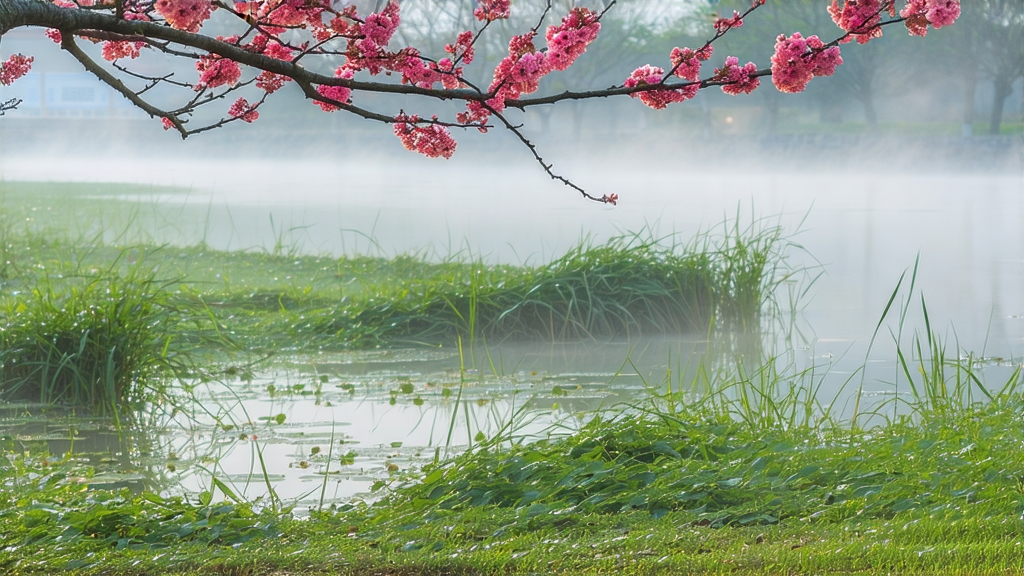
Biluochun, whose name translates literally to “Green Snail Spring,” is one of China’s ten most celebrated green teas, yet it remains a delicate secret outside serious tea circles. Grown on the mist-locked, fruit-tree-dotted hills that rise from the eastern shore of Taihu Lake in Jiangsu Province, this tea is prized for its improbably tiny spiral-shaped leaves, an aroma that carries the perfume of apricot and plum blossoms, and a cup that tastes like cool morning air distilled into liquid jade. To understand Biluochun is to step into a microclimate where lake, mountain, orchard and fog conspire each March to create one of the world’s most fragrant green teas.
Historical whispers place Biluochun’s birth during the late Tang dynasty, when local monks first fired wild tea shoots in iron woks to stop oxidation. The tea entered imperial records in the Kangxi era (1662-1722) after the Qing emperor, touring the region, was captivated by its “startling fragrance.” He supposedly renamed it from the rustic “Xia Sha Ren Xiang” (“Scary Fragrance”) to the more elegant “Biluochun,” referencing both its color and its snail-shell curl. Commerce followed fame: by the nineteenth century Suzhou tea firms were exporting the leaf down the Grand Canal to Canton, where foreign merchants mistook its intense aroma for added perfume, a myth that still haunts the tea today.
Geography is the first actor in Biluochun’s drama. The Dongting Dong and Xi mountains rise steeply from Taihu, China’s third-largest freshwater lake. Warm daytime lake vapors meet cool night air, generating a 75–85 % humidity blanket that forces the tea bush to grow slowly, stacking amino acids and fragrant compounds in the process. Unlike the continentally influenced tea gardens of Yunnan or Fujian, Biluochun’s terroir is maritime; winter here is mild, spring arrives early, and the surrounding peach, plum and loquat trees bloom in synchrony with the tea, letting their nectar drift onto the downy buds. The result is a natural “scenting” no master blender in Guangzhou could replicate.
Although all Biluochun shares this terroir, three distinct styles have emerged. “Dongshan Original” comes from the east mountain’s shaded northern slopes, where morning mist lingers longest; its leaf is the smallest and most silvery, yielding a pale liquor with orchid notes. “Xishan Traditional,” grown on the west mountain’s sunny southern face, produces a slightly bolder cup with a nuttier finish. Since 2005 a “Taihu Plain” version has expanded onto lower-elevation foothills; machine-aided and more affordable, it offers the curly look but lacks the haunting aromatics of the mountain originals. Purists insist that only the hand-harvested core bud and the adjacent half-open leaf, plucked before the Qingming festival in early April, deserve the name Biluochun.
Crafting the tea is a race against enzymatic time. Picking starts at dawn when dew still weighs the shoots; any delay oxidizes the cut surface, flattening fragrance. Experienced pluckers pinch rather than pull, keeping the bud intact and dropping it into shallow bamboo baskets lined with nettle cloth to prevent bruising. Within two hours the leaves reach the village work-shed where they are spread no thicker than two centimeters to wither for thirty minutes, just long enough for surface moisture to evaporate without losing the internal juiciness critical for curling.
The kill-green phase follows, performed on seasoned iron pans heated to 180 °C. A crafter’s bare hand flips 250 g of leaves against the scorching metal for precisely three minutes, relying on calloused skin to judge when the leaf temperature reaches 70 °C—hot enough to deactivate polyphenol oxidase yet cool enough to preserve green chlorophyll. The motion is a figure-eight: palm presses, fingers flick, wrist rotates, causing the soft leaf to curl around the bud. As moisture drops to 40 %, heat is lowered to 120 °C and the same hand now kneads the leaf against the pan wall, coaxing the signature spiral while rupturing cell walls to release aromatic oils. Locals call this “one kill, three kneads, one dry,” a mantra recited for five uninterrupted minutes until the leaf feels leathery and emits a faint peach-pit scent. A final gentle toasting at 80 °C sets the moisture at 5–6 %, locking in fragrance and allowing the tight roll to hold for months.